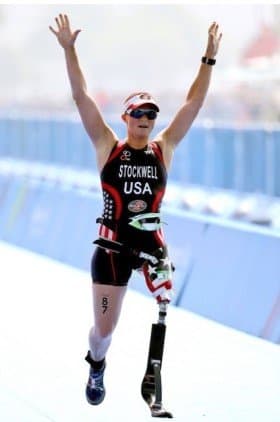
With the increase in technology use and more career paths that force a more sedentary lifestyle, poor posture has become a worldwide issue. Craning the neck too far forward to peer at keyboard screens and cell phone screens causes a loss of the cervical lordosis. Every time we lean forward 60 degrees, the stress on the neck is increased by approximately 60 pounds - for every inch our heads are moved forward, an extra 10 pounds of weight is added to the neck. This constant added pressure cumulatively leads to chronic pain, numbness in the arms and hands, improper breathing, and pinched nerves.
What does all of this mean? For athletes who are constantly placing added stressors on their bones and joints, this loss of proper cervical (neck) curvature, known as Anterior Head Carriage (AHC), can have a significantly negative impact on performance. As the head progresses forward, the muscles of the back and neck are forced to work harder to keep the chin off the chest. This compresses the nerves at the base of the neck and leads to headaches at the base of the skull or those that mimic sinus headaches. Not only is more energy being spent from already depleted bodies, but this forward head carriage can also result in a loss of 30% of vital lung capacity, as well as reduce the diameter of the vertebral artery, the primary source of blood flow to the brain.
To put it bluntly, poor posture is making your workouts harder! And it is completely preventable (and reversible); though this process does take time and effort.
How to Check Yourself - The Wall Test
Standing with the back against a wall and heels 2-4 inches away, the hips, shoulder blades and back of the head should be touching the wall. If the head needs to be tilted back or the chin lifted to allow contact with the wall, this indicates imbalance in the neck and upper spine. The space present between the lower back and the wall should measure about one to two inches, or the thickness of a flat hand. A larger gap can indicate anterior pelvic tilt, and the absence of a gap may indicate posterior pelvic tilt.
How to Check for Neutral Posture
The point between the eyes should line up vertically with the chin, breastbone, belly button, mid-pelvic area and midpoint between the knees and ankles.
The height of the eyes, ears, shoulders, hips and knees should be level.
There should be three natural curves in the spine, slightly forward at the neck and lower back, and slightly backward at the upper back.
The ears should be aligned vertically over the shoulders, hips, knees, and ankles.
Take some time to read through this article that provides a more in depth understanding of the ways in which poor posture is taking away from your athletic performance.
Tips and Tricks to Keep Yourself in Check
For those who play behind desks and technology:
● Create a spine-friendly workspace where the bottom of your computer screen is level with your eyes, sitting 30” directly in front of you
○ Sit in a chair that supports elbows, hips, and knees at 90 degree angles, as well as provides proper lumbar support (if necessary, use a lumbar support to help maintain an upright position)
○ Make certain your feet are both flat on the ground (no crossing the legs!)
● Get up and move!
○ On average, getting up and away from a desk or computer every 30 minutes to move the joints will help relieve pressure on muscles surrounding the spine and disks between the vertebrae
○ Bruegger’s Postural Relief Exercise: Stand up tall, roll and pull the shoulder blades back and slightly contract the muscles between the blades, bring the chin back to help maintain the ear/shoulder alignment, and tuck the pelvis forward (rotate through with 5 second holds for a few minutes each time you are getting up from your desk to relieve gravity off the spine).
For that cell phone use:
● Rather than staring down at the phone with chin tucked to the chest, hold the phone in one hand, wrapping the opposite arm around the body to act as a table on which to rest the cell-phone using elbow (hug the body with one arm, resting the arm used to hold the cell phone on that forearm/wrist).
○ This will keep the neck from reverse curving and the chest/lungs open!
● Remember bluetooth headsets? Or headphones? Instead of tucking the cell phone between the ear and shoulder, switch to a handsfree option that will prevent craning the neck to one side or the other.
For the car-commuter:
● That head rest if there for a reason, USE IT! Drivers have a tendency to sit forward, with the head and neck strained forward. Rather than try to shove the head through the dash, take a load off the neck and thoracic spine by relaxing into the seat and allowing the head to remain on the headrest (clear indication if you are sitting with proper posture!).
As always, the first step is to become aware. Help keep each other accountable and make sure to encourage your fellow athletes to sit with proper posture in those boots!
- Kelsea Offner, MA



